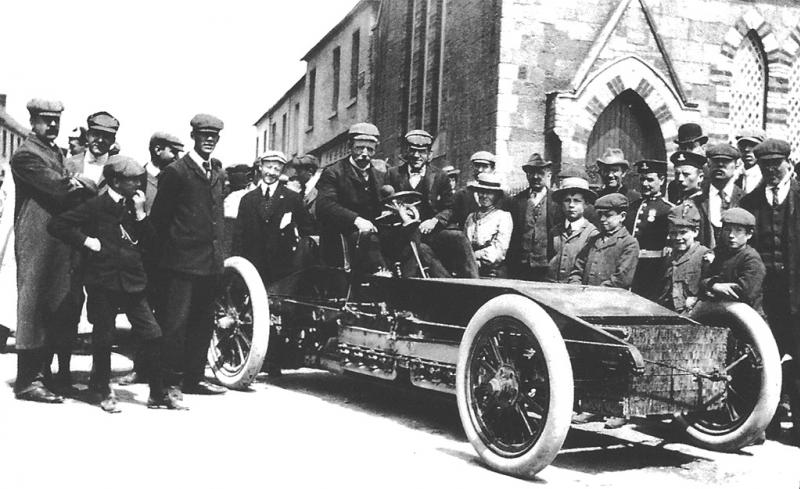|
Battle Of Skerries
The Battle of Skerries, also named the Battle of Ardscull, was a battle in the Bruce campaign in Ireland – part of the First War of Scottish Independence – fought on 26 January 1316, resulting in a Scottish victory. It was part of the Irish campaign of Edward Bruce, brother of Robert Bruce, king of Scotland. The site of the battle was Skerries near Ardscull in County Kildare. The battle Edward Bruce, earl of Carrick, had landed in Ireland in May the year before, and been proclaimed king of the island in June. Bruce continued on his march south, when on 26 January 1316 the Scottish army was advancing from Castledermot it encountered the English. The Hiberno-Norman forces, summoned by the justiciar of Ireland, consisted of men such as John FitzThomas FitzGerald, Maurice FitzThomas FitzGerald, Thomas FitzJohn, John and Arnold Poer, Maurice de Rocheford, and Miles and David de la Roche. Though these forces heavily outnumbered those of Bruce, internal strife broke ... [...More Info...] [...Related Items...] OR: [Wikipedia] [Google] [Baidu] |
Bruce Campaign In Ireland
The Bruce campaign was a three-year military campaign in Ireland by Edward Bruce, brother of the Scottish king Robert the Bruce. It lasted from his landing at Larne in 1315 to his defeat and death in 1318 at the Battle of Faughart in County Louth. It was part of the First War of Scottish Independence and the conflict between the Irish, Scoto-Normans, and the Hiberno-Normans. After his victory at the Battle of Bannockburn, Robert the Bruce decided to expand his war against the Plantagenet dynasty, by sending an army under his younger brother Edward to invade Ireland. He was also invited by some of the native Irish to send an army to drive out the Hiberno-Norman settlers and in return they would crown his brother High King of Ireland. Another reason for the expedition was that supporters of the exiled House of Balliol had fled to Ireland after fighting at Bannockburn and remained a dangerous threat. These men were led by John MacDougall of Lorn, who was the cousin of John Comyn, ... [...More Info...] [...Related Items...] OR: [Wikipedia] [Google] [Baidu] |
Hiberno-Norman
From the 12th century onwards, a group of Normans invaded and settled in Gaelic Ireland. These settlers later became known as Norman Irish or Hiberno-Normans. They originated mainly among Cambro-Norman families in Wales and Anglo-Normans from England, who were loyal to the Kingdom of England, and the English state supported their claims to territory in the various realms then comprising Ireland. During the High Middle Ages and Late Middle Ages the Hiberno-Normans constituted a feudal aristocracy and merchant oligarchy, known as the Lordship of Ireland. In Ireland, the Normans were also closely associated with the Gregorian Reform of the Catholic Church in Ireland. Over time the descendants of the 12th-century Norman settlers spread throughout Ireland and around the world, as part of the Irish diaspora; they ceased, in most cases, to identify as Norman, Cambro-Norman or Anglo-Norman. The dominance of the Norman Irish declined during the 16th century, after a new English Protest ... [...More Info...] [...Related Items...] OR: [Wikipedia] [Google] [Baidu] |
History Of County Kildare
County Kildare in the province of Leinster, Ireland, was first defined as a diocese in 1111, shired in 1297 and assumed its present borders in 1836. Its location in the Liffey basin on the main routes from Dublin to the south and west meant it was a valuable possession and important theatre of events throughout Irish history. Ancient history An inland town on Ptolemy's map of Ireland of 100 AD may be Rheban on the Barrow river, the only written records from pre-Christian County Kildare. The estimated date for the abandonment of the sacred pre-Christian site of Knockaulin/ Dún Áilinne is 400 AD, the traditional date for foundation of the monastery at Cill Dara is 490 AD, the date for the death of first Bishop Conlaed ua hEimri, (St Conleth) is 520 AD and the estimated date for the death of foundress Saint Brigit, St Brigid (Irish: Naomh Bríd), is 524 AD (also dated 521 and 526). Her death has been celebrated traditionally on 1 February, which is also the pre-Christian festival ... [...More Info...] [...Related Items...] OR: [Wikipedia] [Google] [Baidu] |
Battles Involving England
A battle is an occurrence of combat in warfare between opposing military units of any number or size. A war usually consists of multiple battles. In general, a battle is a military engagement that is well defined in duration, area, and force commitment. An engagement with only limited commitment between the forces and without decisive results is sometimes called a skirmish. The word "battle" can also be used infrequently to refer to an entire operational campaign, although this usage greatly diverges from its conventional or customary meaning. Generally, the word "battle" is used for such campaigns if referring to a protracted combat encounter in which either one or both of the combatants had the same methods, resources, and strategic objectives throughout the encounter. Some prominent examples of this would be the Battle of the Atlantic, Battle of Britain, and Battle of Stalingrad, all in World War II. Wars and military campaigns are guided by military strategy, whereas bat ... [...More Info...] [...Related Items...] OR: [Wikipedia] [Google] [Baidu] |



